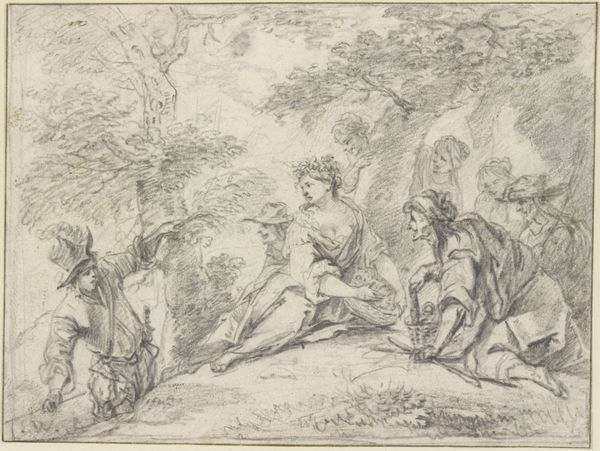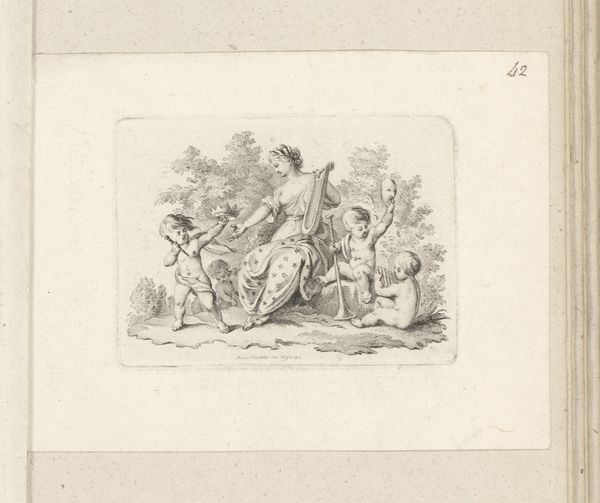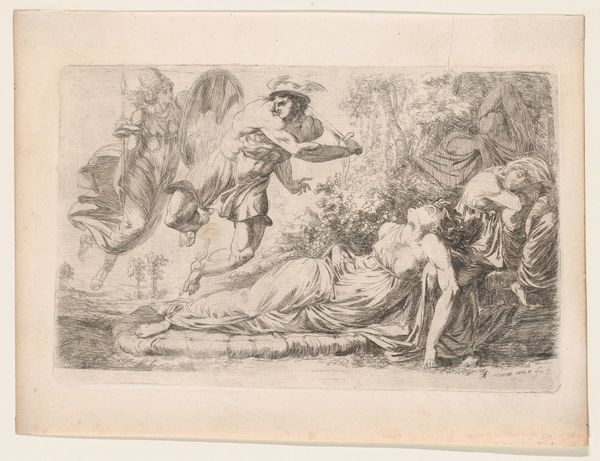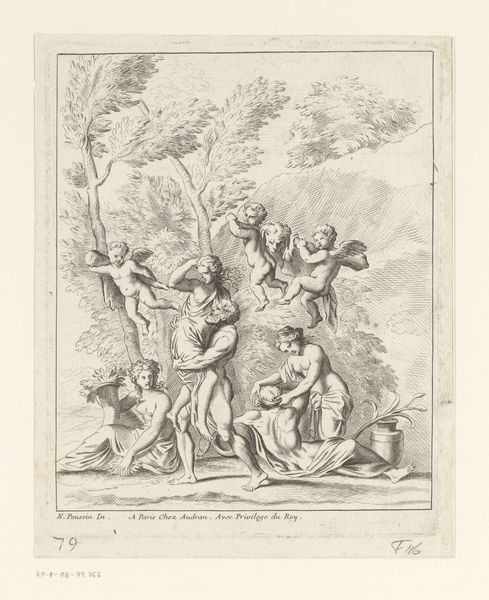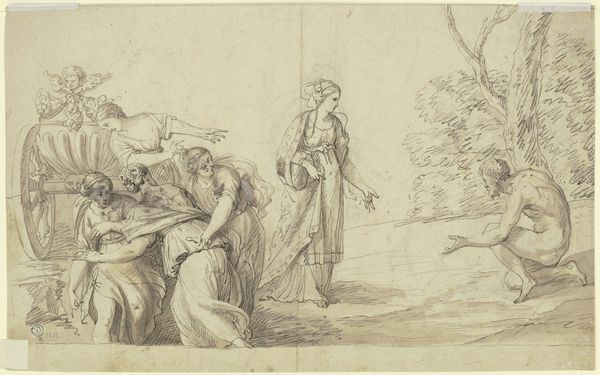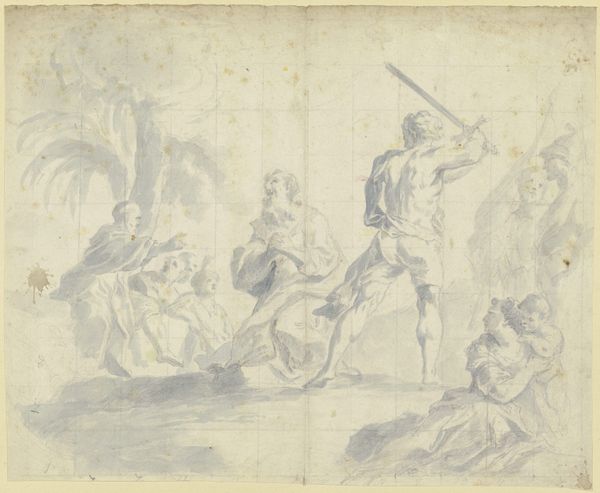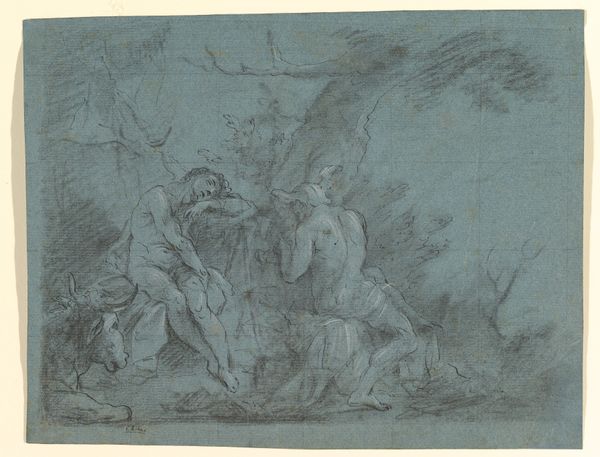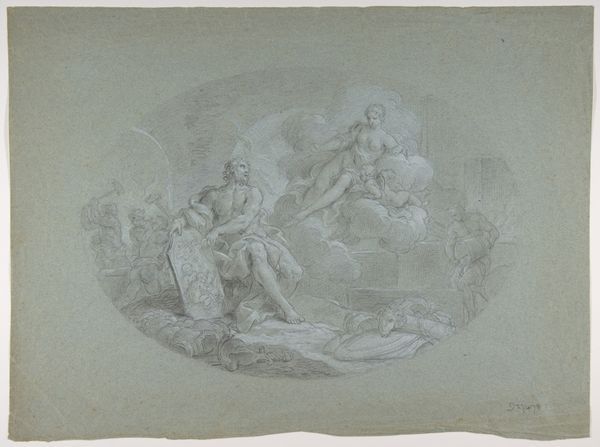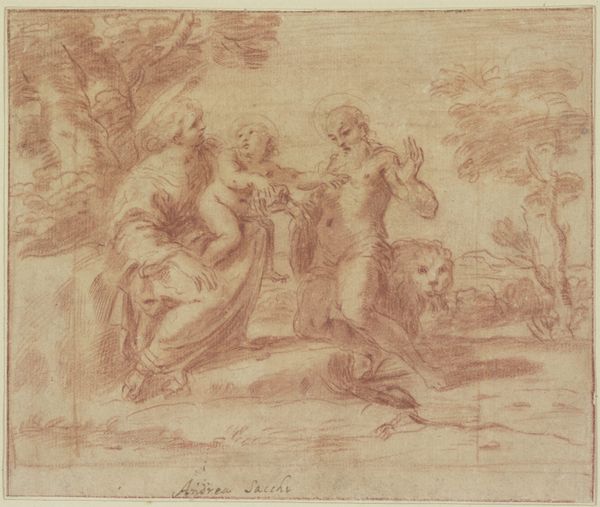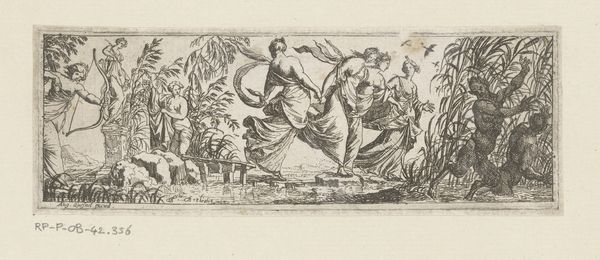
drawing, print, etching
#
drawing
#
narrative-art
#
baroque
# print
#
etching
#
landscape
#
figuration
#
history-painting
Dimensions: height 165 mm, width 230 mm
Copyright: Rijks Museum: Open Domain
Editor: This is "Rest on the Flight into Egypt" by Hans Horions, dating sometime between 1634 and 1672. It’s an etching, giving it this very fine, almost ethereal quality. What immediately strikes me is the contrast between the detailed figures and the quite loose, almost suggestive landscape. What do you make of it? Curator: As a materialist, I look at this etching and immediately think about its production. Consider the labour involved in creating this print. The artist painstakingly etched lines into a metal plate, a skilled craft requiring time and resources. This print would have been reproduced, making art accessible, in a way, to a wider audience. Editor: That’s interesting! I was so focused on the biblical narrative; I hadn't really thought about the mechanics of its creation and dissemination. Does the landscape's loose quality tell us something about the role of the natural world within a society or an artisan’s output at the time? Curator: Precisely. Landscape wasn't just scenery; it was land, property, resources. This “landscape” provides raw materials for the very support upon which the artist renders its depiction. The contrast you observed is revealing, it hints at a changing attitude to labour and representation in this period. What does mass production and reproduction change of this art? Is its craft elevated, or simply diluted? Editor: So it shifts the focus from the divine narrative to the socioeconomic context. It makes me consider who was buying these prints, and how they were being used. Thanks for making me see this work in a totally different light! Curator: Indeed! By considering the materiality and mode of production, we move beyond the surface to see how art reflects and reinforces its cultural and economic realities.
Comments
No comments
Be the first to comment and join the conversation on the ultimate creative platform.
